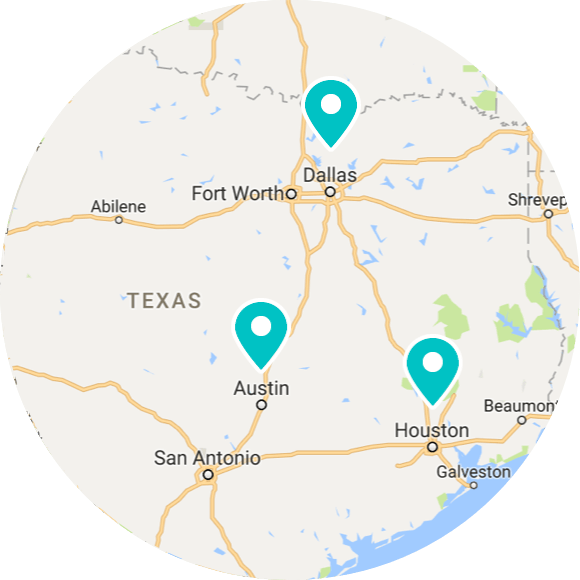Houston is experiencing major growth in the flexible office sector. One company has launched with an 86,000 sq/ft office building, and another TechSpace currently launched with 46,000 sf. These two spaces are already greatly increasing the supply for dedicated flexible office spaces throughout the Houston market.
Corporate real estate managers and the C-suite are beginning to organize their real estate portfolios into core and flexible offices. Core - stable office space that companies rent out for terms spanning years mostly for headquarter spaces. Flexible - office rented for spans of hours, months and years. Companies use flexible office space to expand into new markets, create satellite office space, and provide employees with mobility options. Flexible offices are often furnished, serviced workspaces from coworking, serviced office and direct from buildings.
While in flexible office the average price on LiquidSpace is $167 per person per month in Houston costing $2,010 per year per worker. Putting the cost of flexible office leasing at 44.0% of the cost of traditional leasing. Plus flexible office, depending on the space choice, can give the company access to flexibility to change their real estate footprint at a moment’s notice, and each employee access to community, services and amenities.
Flexible office gives increased flexibility and the social benefits of a team environment. You can’t get this anywhere else while still saving money per worker. One of the reasons it has been hard to implement flexible office in Houston has been the lack of locations another is local landlords only now starting to buy into guest’s need for flexible terms. However, the trends in the Houston Market and in other markets show growth across the board in every submarket creating more coworking space, shared workspace and other office types conducive to the flexibility demands of today’s workforce. CBRE has predicted that 65% of companies expect to use coworking as part of their office portfolio in the Americas by 2020.

An area where LiquidSpace is adding to the available flexible office options is through altSpace. altSpace combines carefully curated office fit-outs with LiquidSpace approved landlord and partner spaces. The altSpace service layer provides design consultation, IT procurement and a dedicated LiquidSpace concierge to help manage a customer’s move and the facility manager’s needs. The altSpace product alters existing space into coworking space. Houston is the perfect city to benefit from this program as there is over 7 million square feet of current sublease space on the market looking for tenants, as the primary lease holder has downsized staff or already found a different space.
In terms of size Houston has been lagging behind some of the larger markets for flexible office space. Some of the coastal cities such as New York, and San Francisco have exploded with supply. In the Texas market Houston is right up there with Austin and Dallas in terms of the flexible office space. Learn how you can leverage the altSpace program as a building owner in the Texas market.

Houston job growth is expected to trend upward in 2017 and 2018. This trend will fuel the growth in the shared office sector. One worry about Houston’s continued growth is the reliance on oil and gas which constitutes 35% of the current GDP. The city has been working on diversification for over a decade. Houston is working hard to woo business from other sectors to come to the city. This benefits the flexible office sector as companies try out the Houston market before permanently moving.
When Oxford Properties asked CEO’s of companies in their “Destination Collaboration: The Future of Work” report what their main worry was? “The ability of the enterprise to attract and retain top talent” came out as the top concern. The workers that are now joining the workforce, millennials have different office criteria than their predecessors the retiring baby boomers.
Millennials (18-34) currently occupy 1/3 of the total working population. This generation wants something more out of their office. Trends, reported by Forbes, have shown experiential retail, virtual reality, and so much more, contribute to an environment that facilitates more than just 9-5 work.




